[fusion_builder_container background_parallax=”none” enable_mobile=”no” parallax_speed=”0.3″ background_repeat=”no-repeat” background_position=”left top” video_aspect_ratio=”16:9″ overlay_opacity=”0.5″ video_mute=”yes” video_loop=”yes” fade=”no” border_size=”0px” padding_top=”20″ padding_bottom=”20″ padding_left=”0″ padding_right=”0″ hundred_percent=”no” equal_height_columns=”no” hide_on_mobile=”no”][fusion_builder_row][fusion_builder_column type=”1_1″ layout=”1_1″ background_position=”left top” background_color=”” border_size=”” border_color=”” border_style=”solid” spacing=”yes” background_image=”” background_repeat=”no-repeat” padding=”” margin_top=”0px” margin_bottom=”0px” class=”” id=”” animation_type=”” animation_speed=”0.3″ animation_direction=”left” hide_on_mobile=”no” center_content=”no” min_height=”none” last=”no” hover_type=”none” link=”” border_position=”all”][fusion_text]
Start run commuting on a regular basis and you’ll quickly learn two things about your clothing: 1) You don’t have enough; or 2) You’re doing laundry every other night. If you don’t have the money to sink into multiple sets of running clothes, then hopefully you are doing your laundry in a way that extends the life of the fabric to the maximum extent. In this brief post, I’ll show you how to take care of your technical fabrics and equipment.
[/fusion_text][/fusion_builder_column][/fusion_builder_row][/fusion_builder_container][fusion_builder_container hundred_percent=”yes” overflow=”visible”][fusion_builder_row][fusion_builder_column type=”1_1″ layout=”1_1″ background_position=”left top” background_color=”” border_size=”” border_color=”” border_style=”solid” spacing=”yes” background_image=”” background_repeat=”no-repeat” padding=”” margin_top=”0px” margin_bottom=”0px” class=”” id=”” animation_type=”” animation_speed=”0.3″ animation_direction=”left” hide_on_mobile=”no” center_content=”no” min_height=”none” last=”no” hover_type=”none” link=”” border_position=”all”][fusion_text]
Fabric Types
If you’ve been running races over the past 10 years, you will have likely noticed an overwhelming trend in race shirts moving away from cotton to technical fabrics. Pre-2005, cotton was king. Now, I would say about 90% of the races I’ve run over the past few years have all given out tech shirts at the finish line. Why the switch?
Technical fabrics have several advantages over cotton – They are more breathable, more durable, dry faster, and, in most cases, fight bacteria and odor much better. I say most cases because I have found that this type of gear becomes particularly stinky after running during rainstorms in the city. They take on a new level of funk of which George Clinton would be proud.
Wool is another cotton-alternative that runners, like TRC’s own Kyle T., swear by (and at sometimes). Wool has similar advantages as technical fabrics and, when surveyed recently, 9 out of 10 sheep preferred it over cotton. So there you have it…
Cotton has been around for a long time. A lot of runners simply prefer the feel of cotton over anything else. The main thing I dislike about cotton is that it gets heavy when wet. Also, it has a higher chafe factor.
Note: The methods described below are what I have been using for years and generally accepted for use on technical clothing. Be sure to check your tags first to make sure you are doing the right thing. I don’t want to be responsible for ruining your new ultra-breathable, eco-friendly shirt made from the fur of 1,000 Peruvian hamsters (sustainably harvested, no doubt).
Cleaning Your Clothing
Technical and Wool Clothing: Cold water only, no fabric softener (reduces breathability, adds odd smell), minimal detergent. Air dry overnight w/fan. Which detergent works best? I use a store-brand liquid laundry detergent. You could spend extra money on special tech washes, but everything comes out clean and smelling fine using the regular stuff.
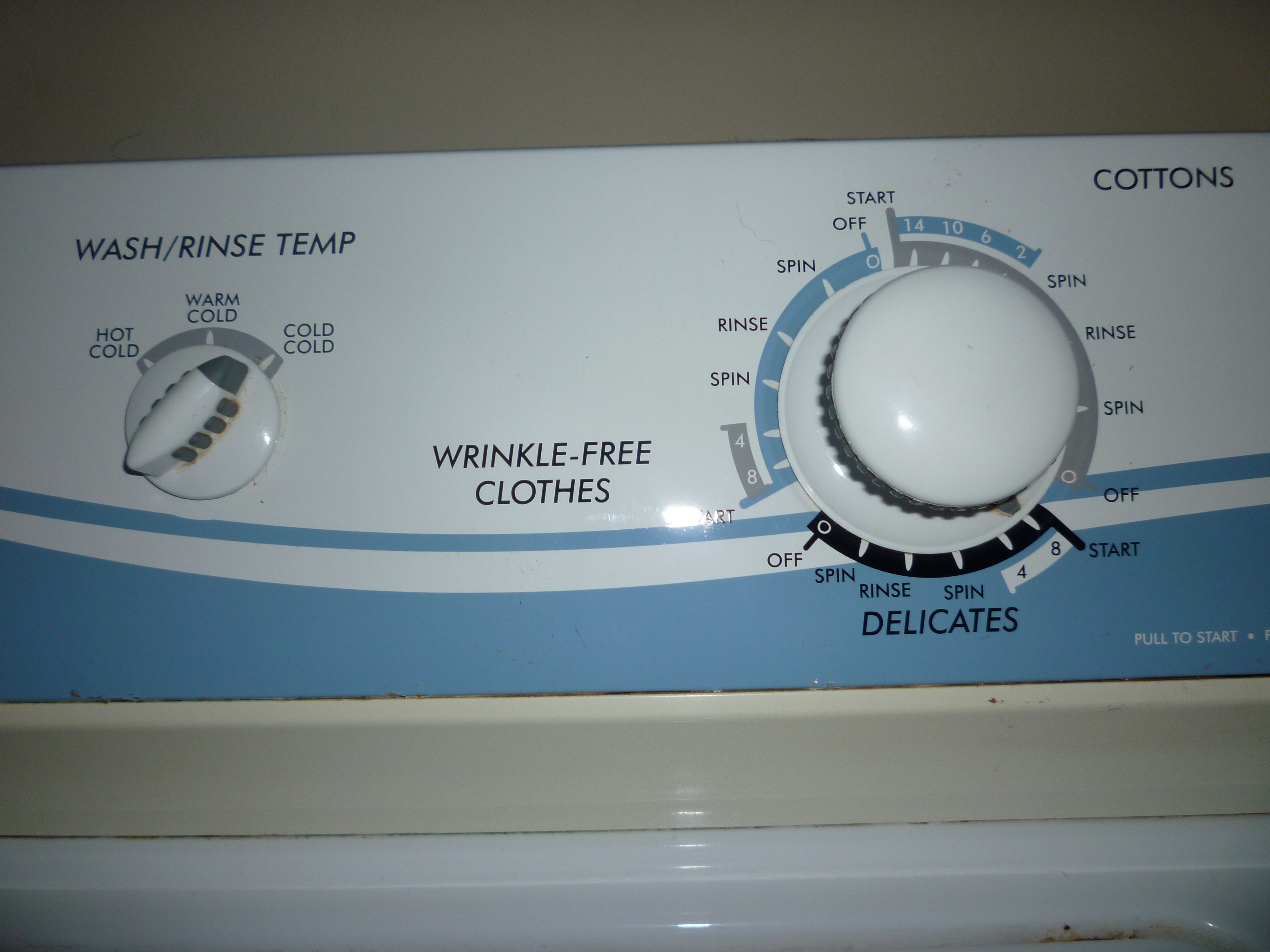
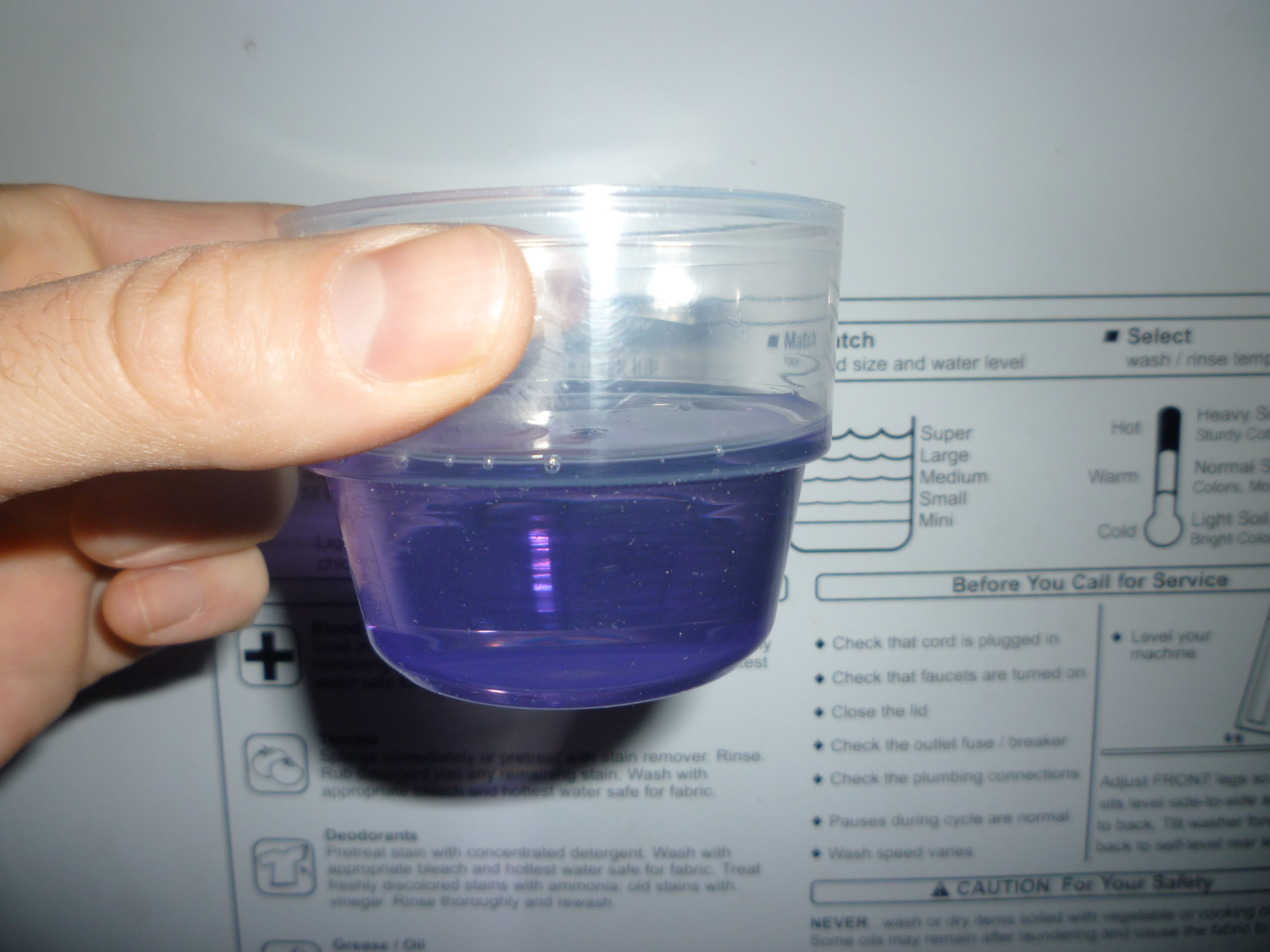
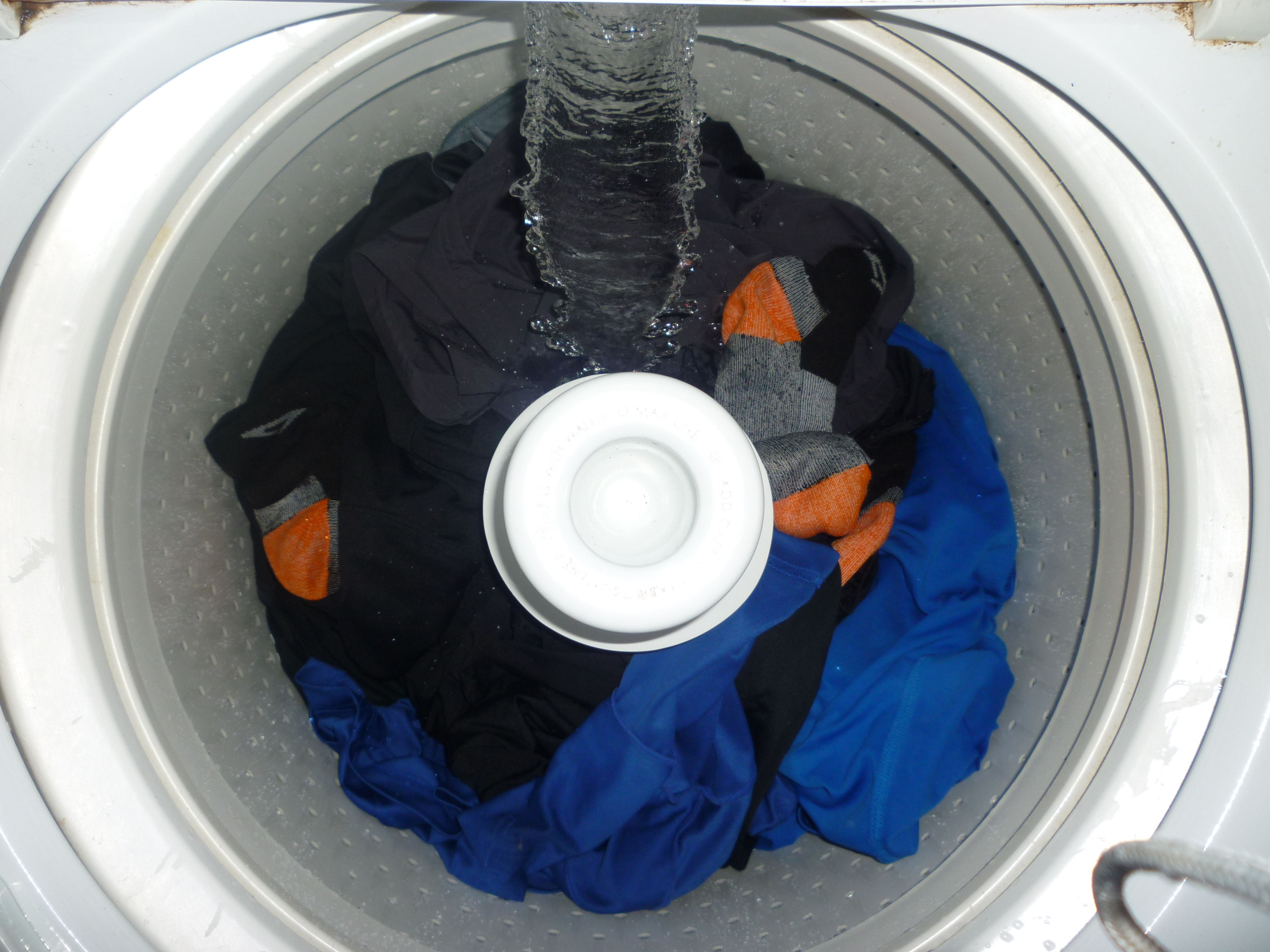
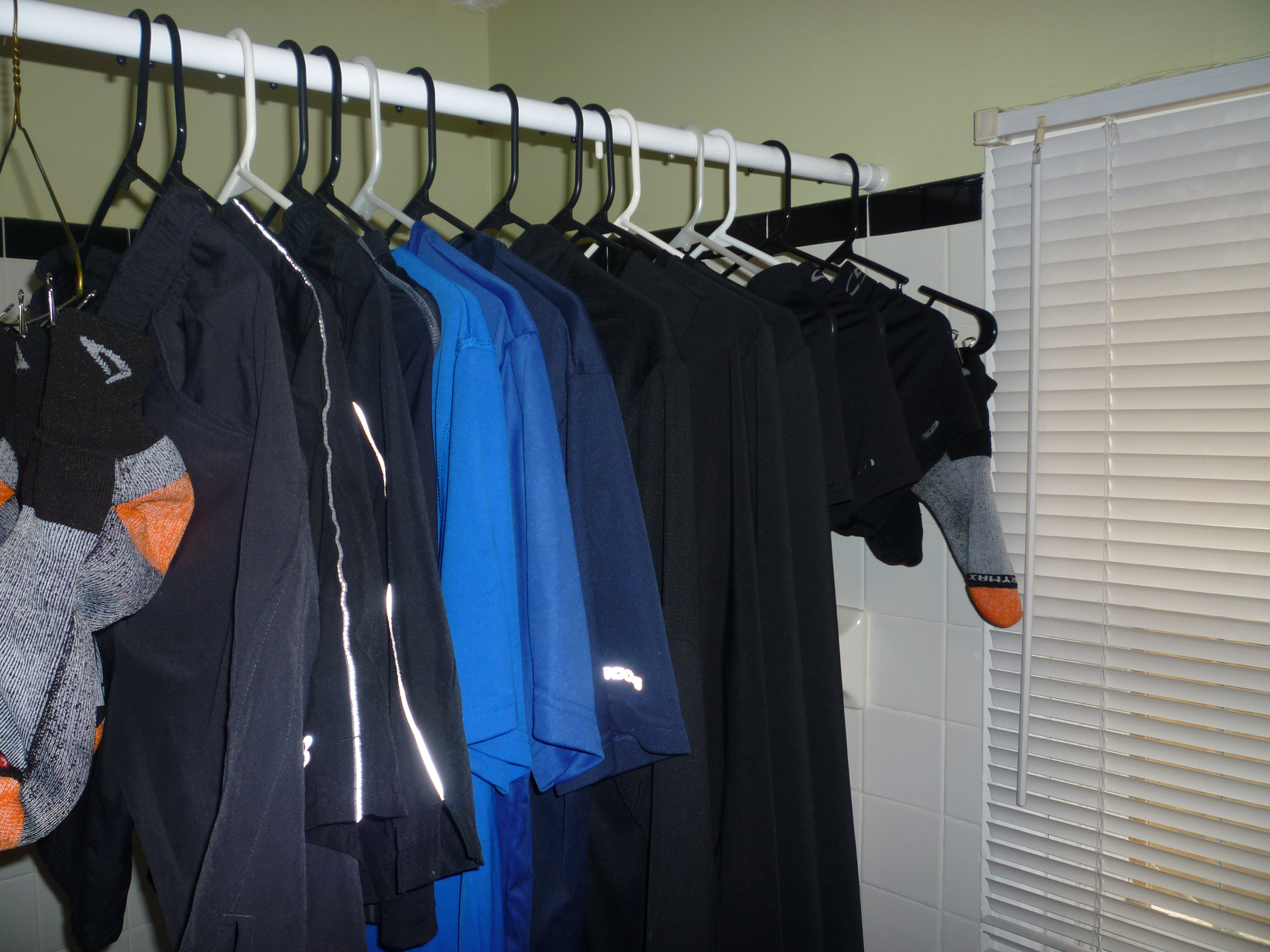
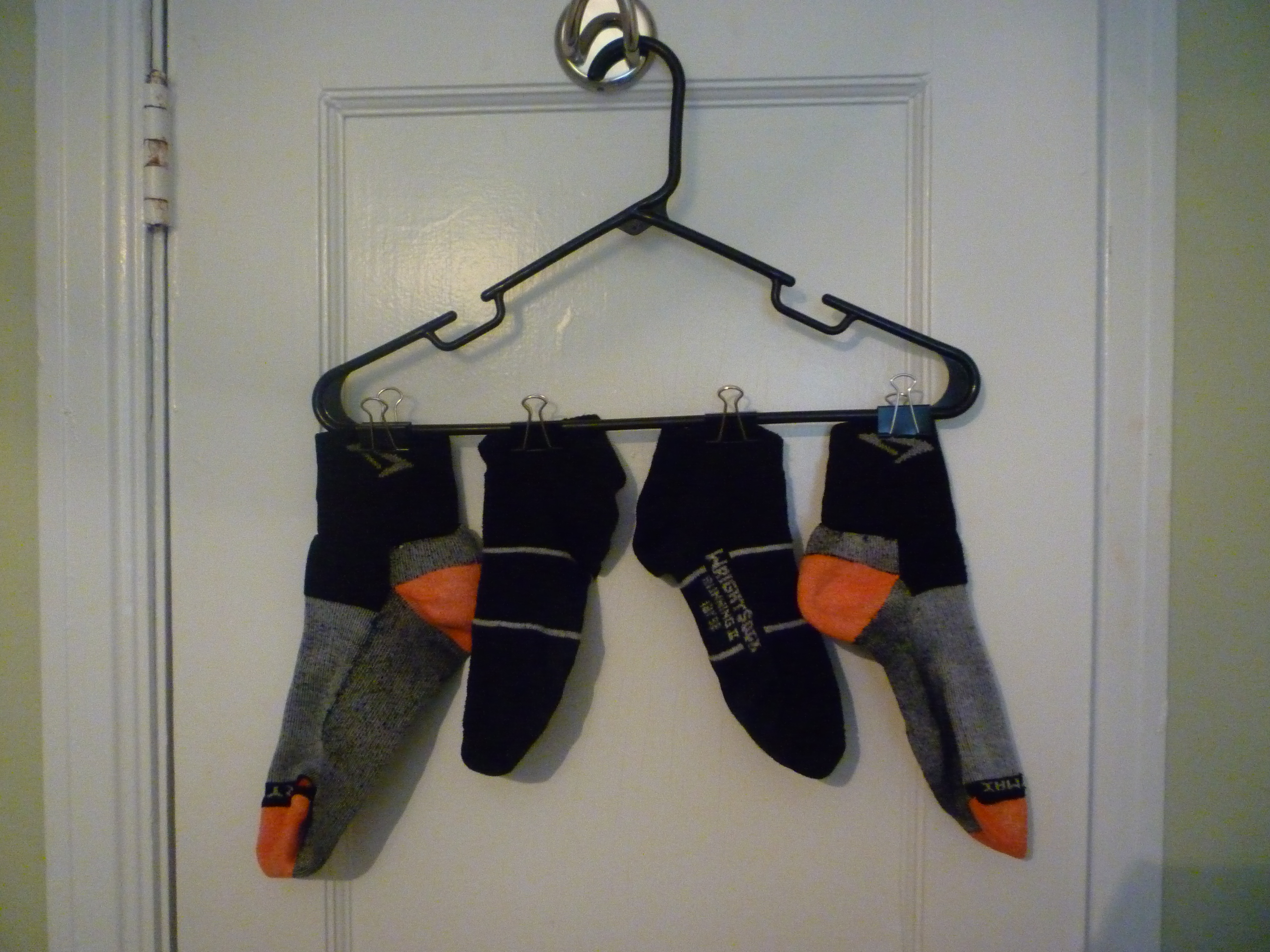
Cleaning Your Shoes
Pre-scrub them using a mild detergent, remove or tie up laces, add to washer with clothing. Air dry.
The one downfall to the shoes pictured here (New Balance Minimus MR10): they get stinky quickly and need to be washed often. Other than that, they’re a great shoe.
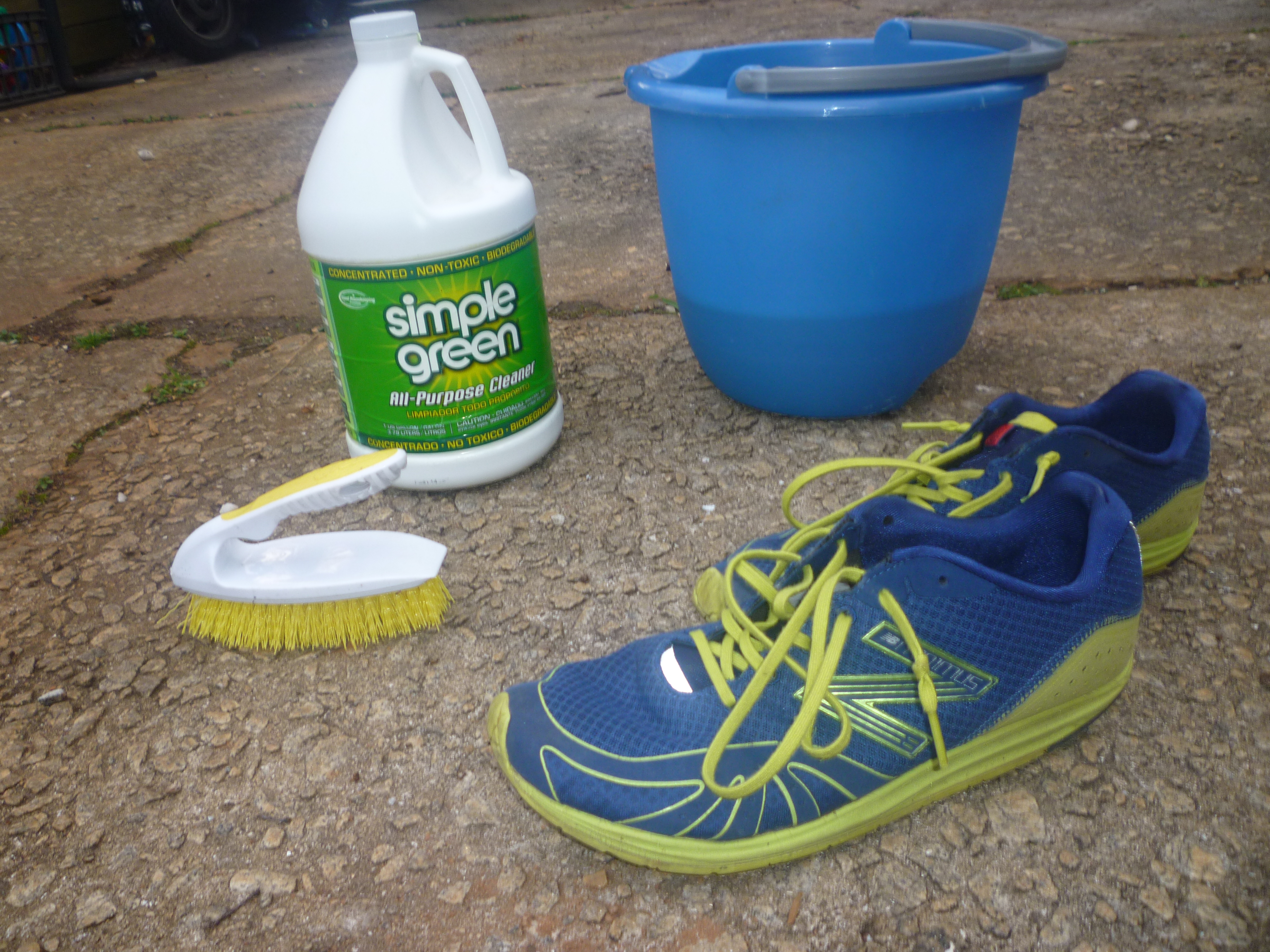
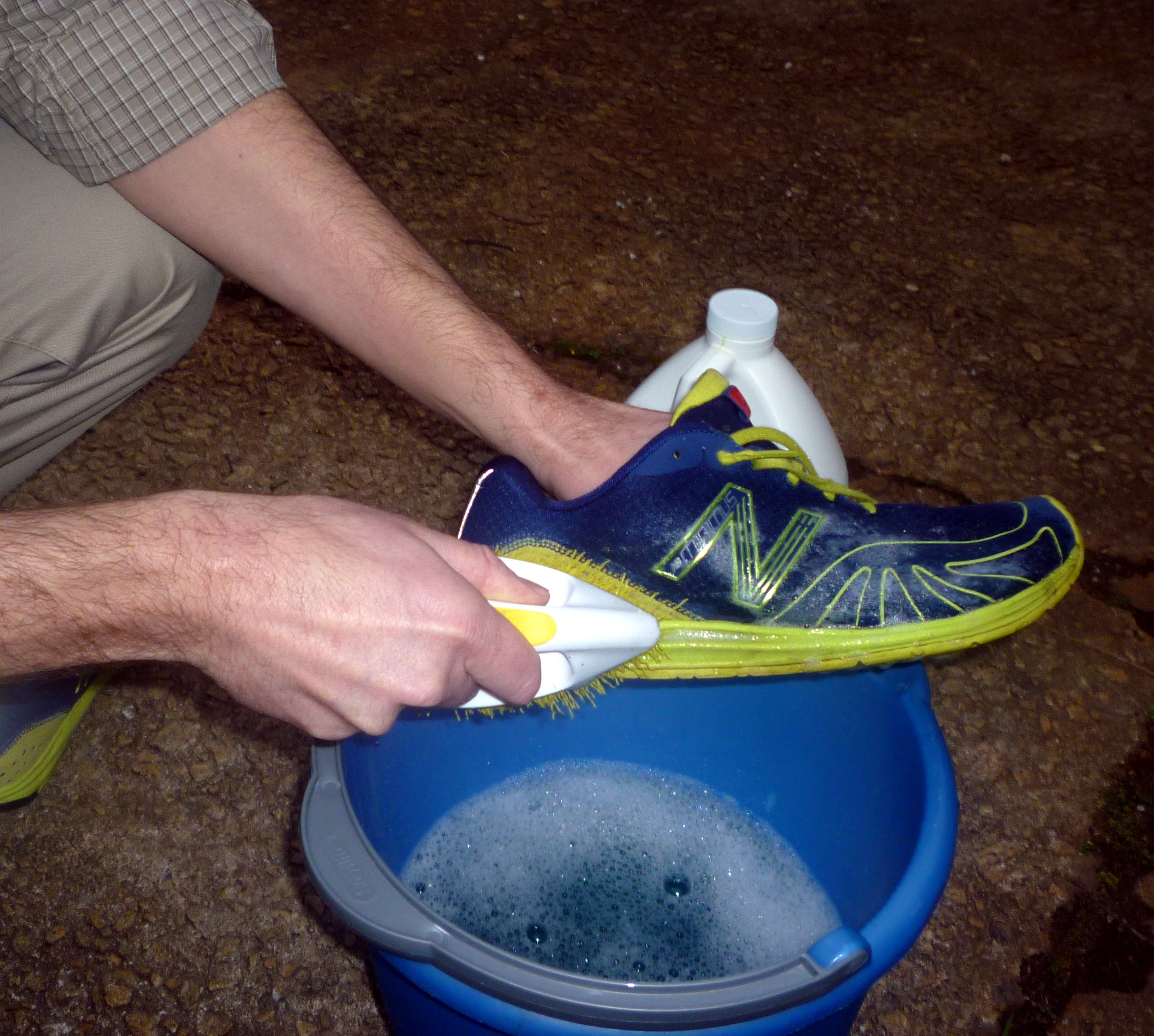
Cleaning Your Pack
If your pack has a built-in frame, use brush and mild detergent to scrub and clean. Air dry after rinsing. If your pack is a softshell without a frame, you can use the same techniques listed above for shoes. Tie up all straps before putting it in the washer.
I rarely wash my packs. They just don’t get stinky or dirty very often (hence, no pictures for this section).
TL; DR (Too long; didn’t read)
– For clothing: Gentle cycle in washer, cold water, minimal detergent, air dry only
– For gear: Scrub with mild detergent, shoes and frameless packs can go in washer, cold water, air dry only
Products
Simple Green (shoes and gear)
Tide makes a great Febreeze detergent that leaves gear clean and smelling fresh.
Other products: Nathan Sportwash, SnoSeal Sport Wash, Sport Suds, Atsko Sport Wash.
[/fusion_text][/fusion_builder_column][/fusion_builder_row][/fusion_builder_container]

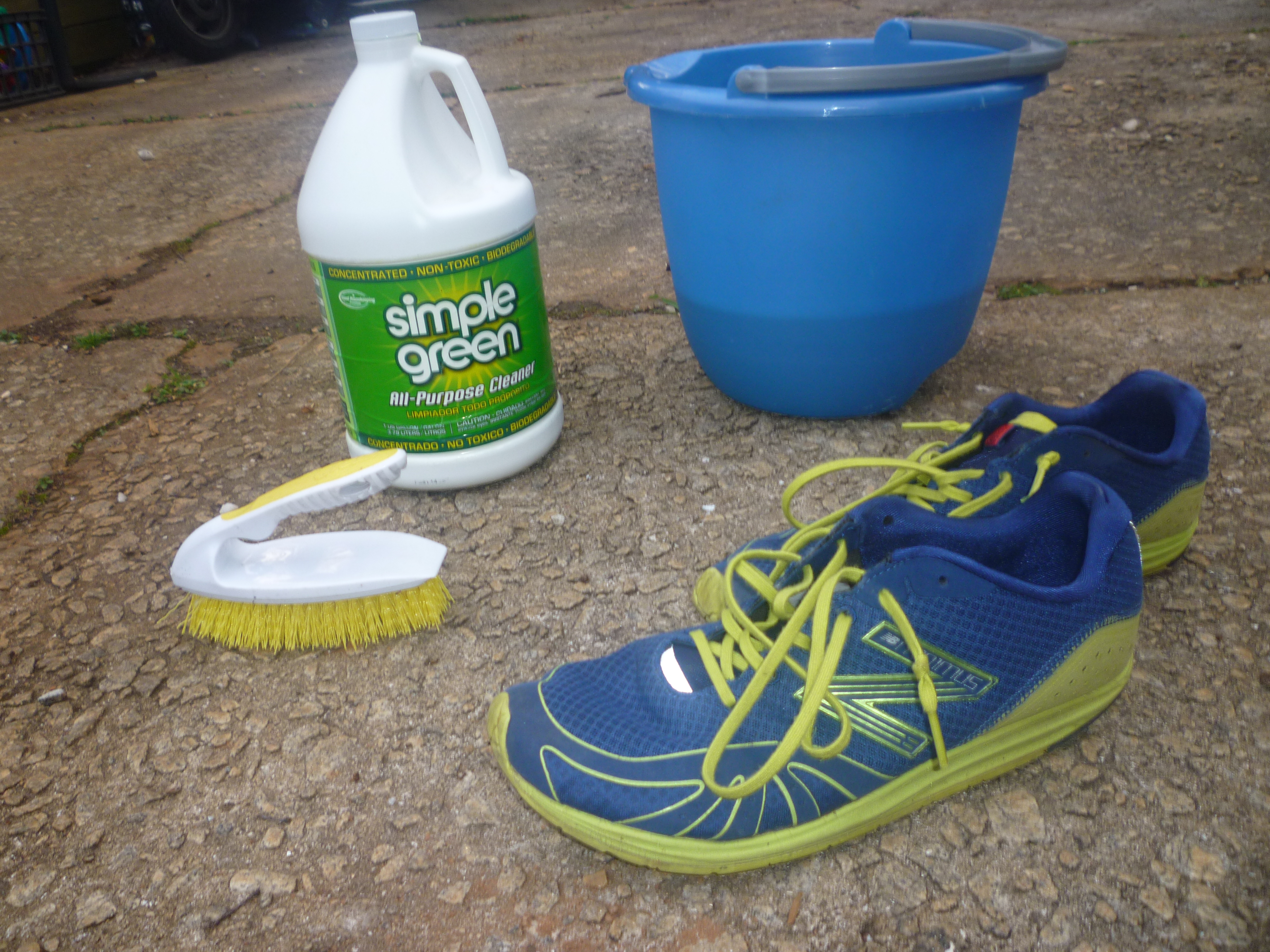
A good tip for getting any built-up funk out of your technical fabrics is to add some dissolved oxyclean to the wash. Every couple of months I’ll actually soak a bunch of them in a bucket of oxyclean as well.
It’s actually easy to make on your own too:
1 cup water
1/2 cup hydrogen peroxide
1/2 cup baking soda
Great tip, Hall! I’ve always wondered whether that stuff worked or not.
Yeah just recently I couldn’t get the funk out of my technical stuff and was pretty sick of it, but an hour soak and then throwing some in the wash each time keeps it away now. I’ve only used the brand name one so far, but I’ll be mixing my own once I’m out of it.
Ooh, that is a good tip. Thanks, Hall!
My experience has been that technical fabrics are much harder to keep from smelling than cotton… but I’m not as careful when drying them. I frequently forget to line dry them. Perhaps that’s the problem?
Stephen, I think you are on to it. When I have put mine in the dryer, they seem fine fresh out of the machine or the drawer; however, they are pretty smelly after a run. Yet when I let them air dry, they seem to better stave off the stank.
No question this is the place to get this info, thanks y’all.